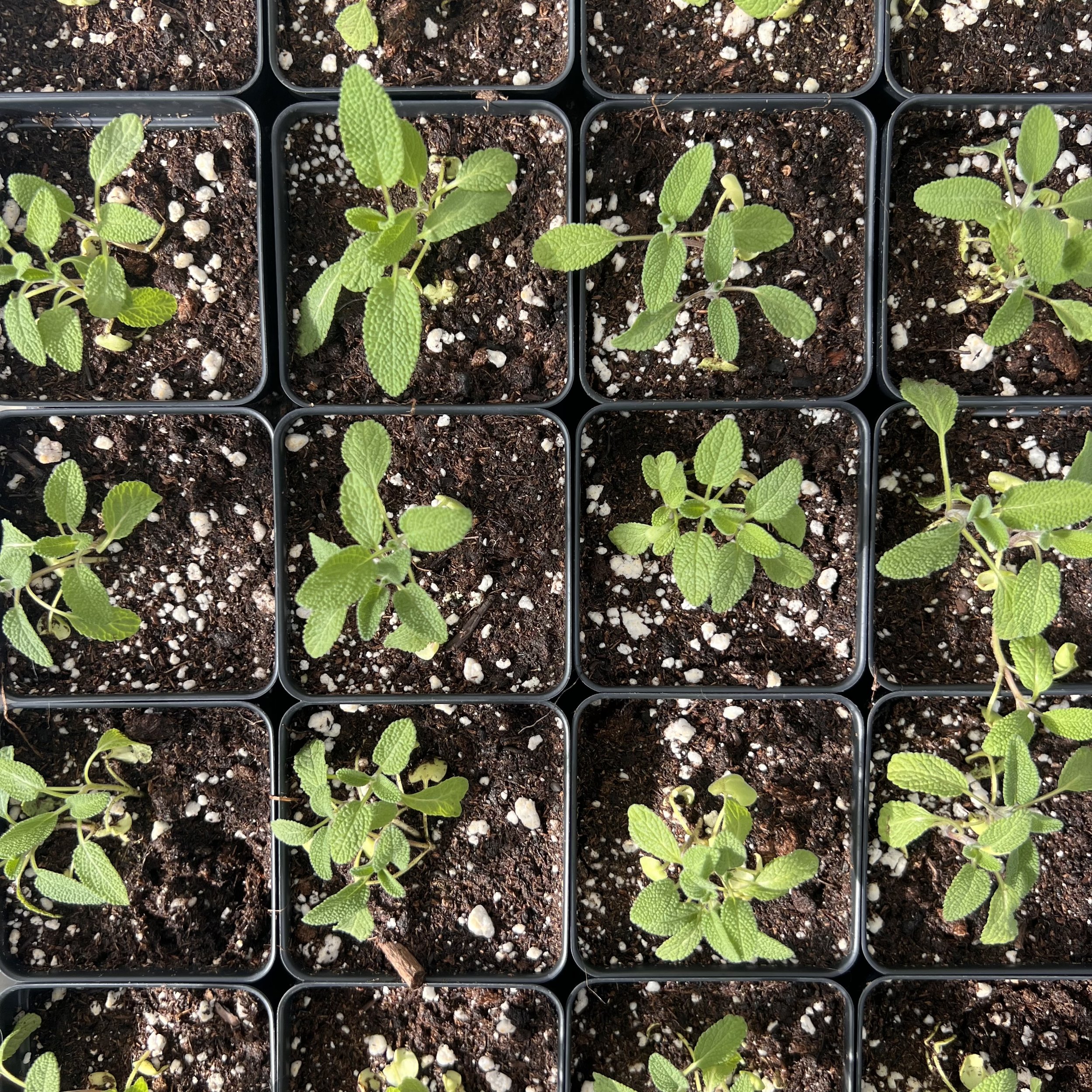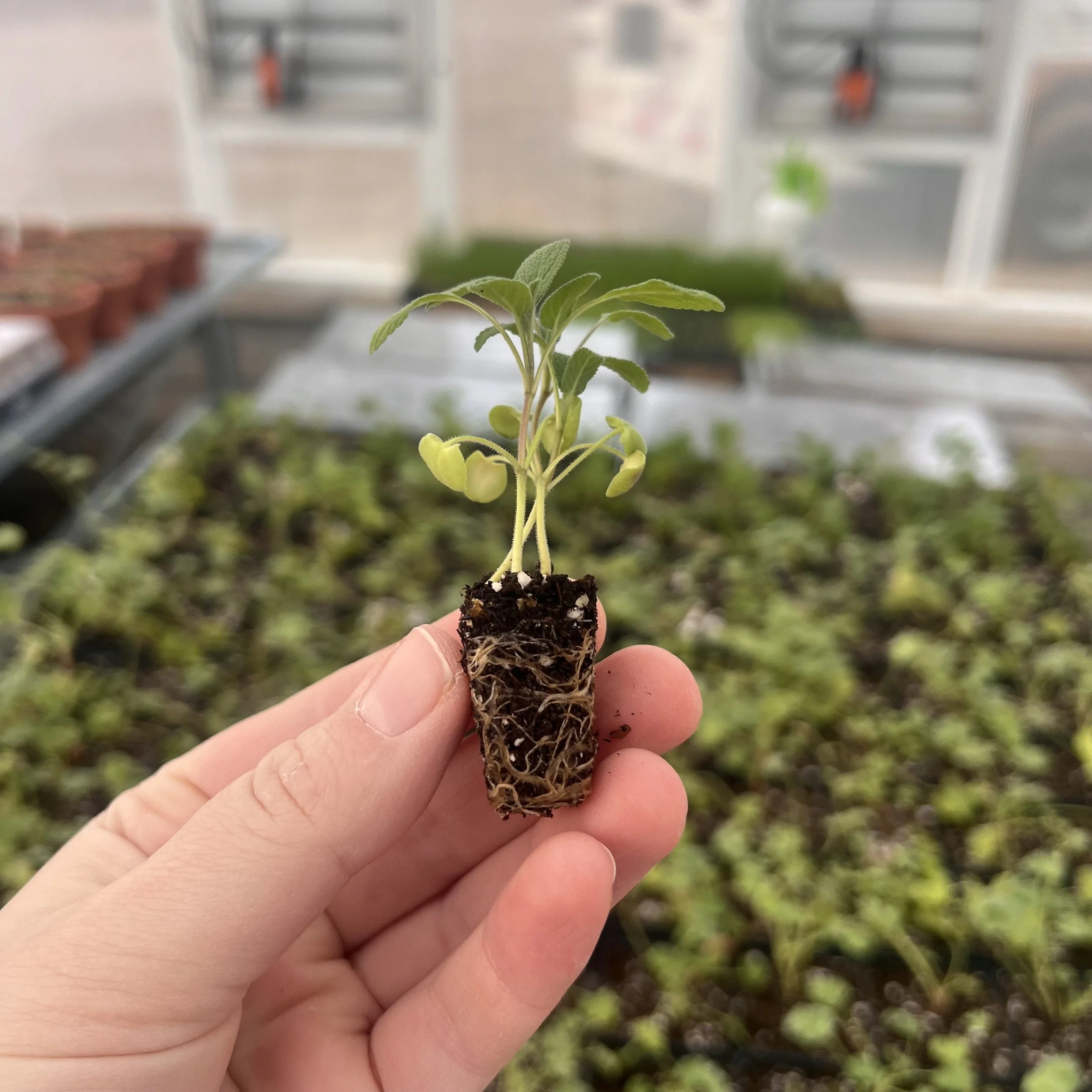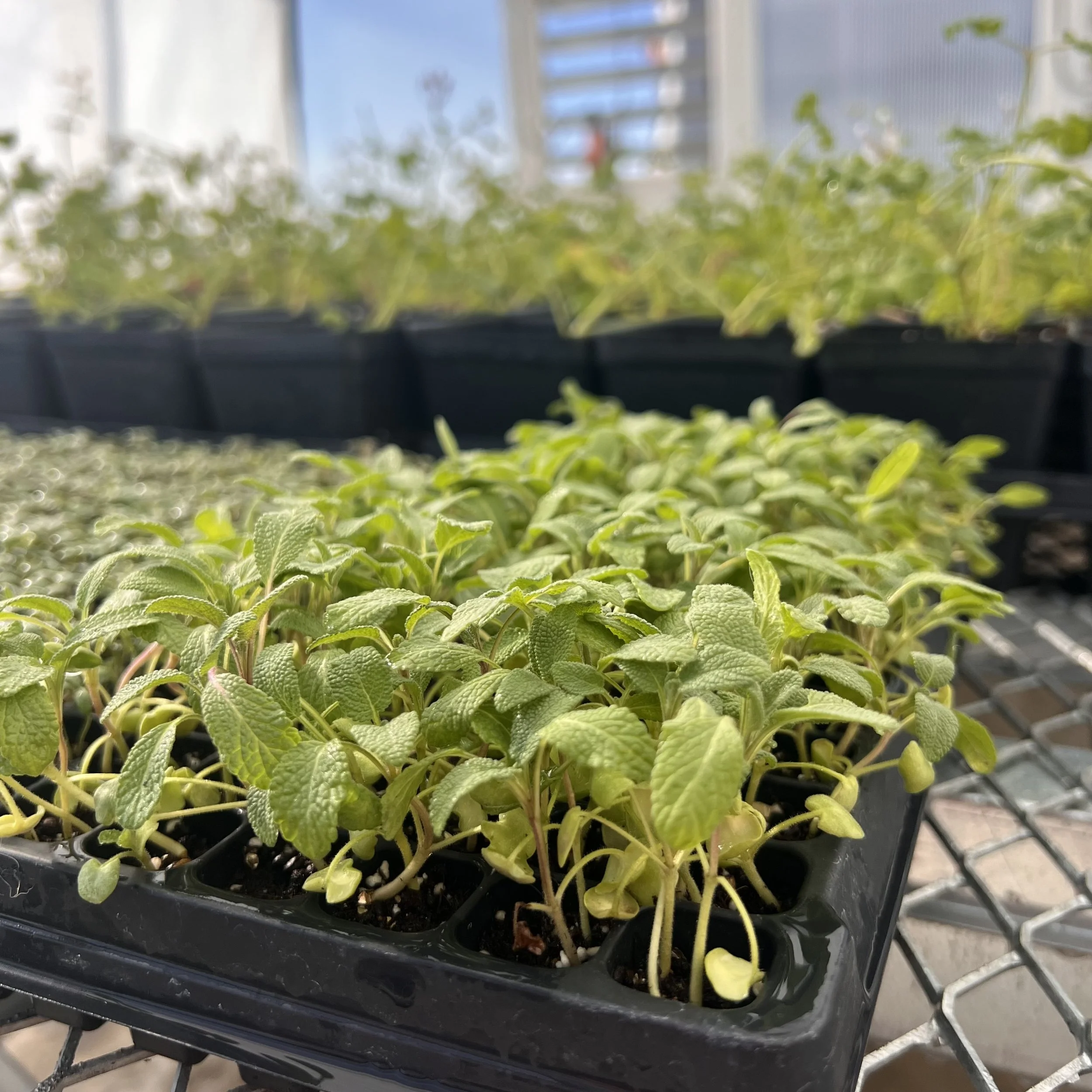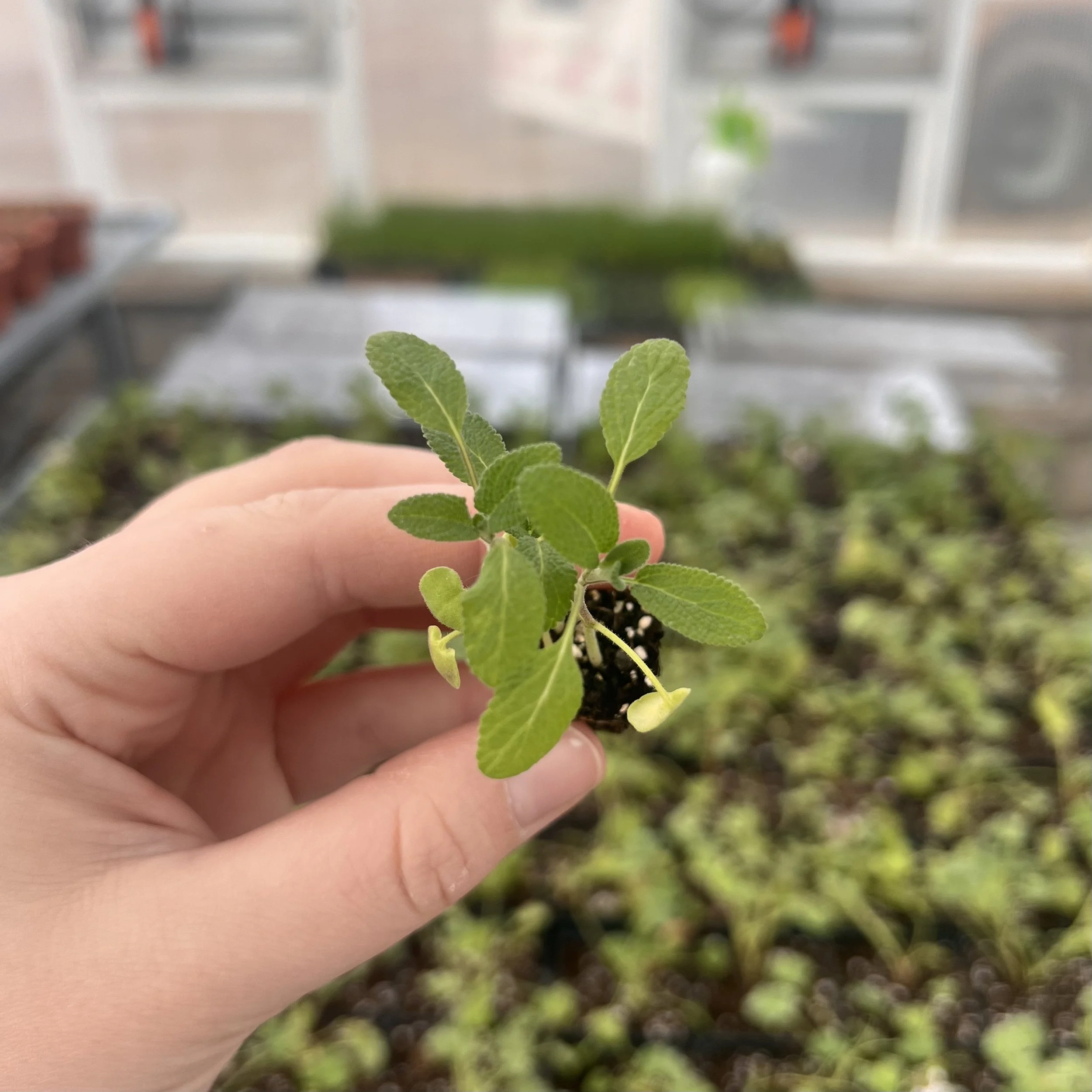
Sage
Salvia officinalis
-
When to Plant: Plant after the last danger of frost has passed. I suggest planting when soil temperatures are warmer in late spring.
Click here to find your last frost date.
Light: Partial Sun to Full Sun
Soil: Well-drained soil is always best. Make sure you space properly to allow proper airflow around foliage, as sage can struggle with foliar disease when planted in close quarters.
If planting in a container, use a general purpose mix.
-
Provide moisture when the top 2” of soil/mix is dry or when you notice wilt. Time between watering cycles is determined by your soil type and climate. If in a container, daily watering may be necessary.
-
If planted in a container, try a slow-release fertilizer for easy care, following the recommended bottle rates. Sometimes, potting mixes incorporate slow release fertilizer that lasts for 6 months.
Fertilizing while planted in ground may not be necessary if soil quality is good.
-
Harvest sage regularly to thin out thick growth. Even if you don’t plan on using, you can always throw a few stems in a vase of water to enjoy.
Don’t remove more than 40% of a plant at any given harvest time. Watch my herb harvesting Unearth Horticulture episode here.
-
Salvia (sage genus) is a HUGE genus containing over 900 species. Some are even native to Kansas.



